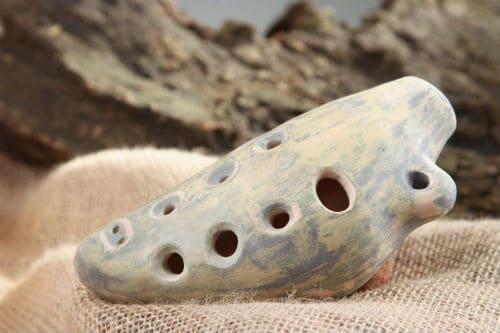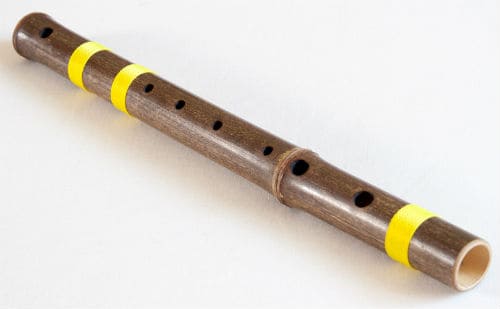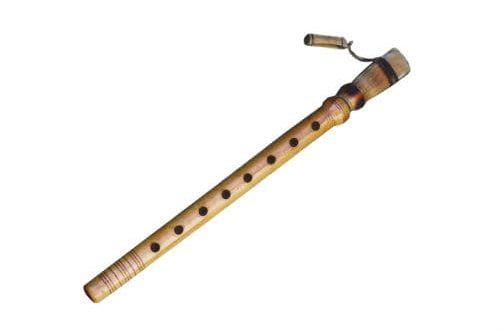
Whistle: tool description, history, structure, types, use
A small, unpretentious object has found wide application in people’s lives. It is a musical instrument, a children’s toy, a signal composition, an attractive souvenir. Sounding incredibly beautiful, the whistle attracts more and more music lovers. It is very interesting and pleasant to play it, musicians learn to play this miniature flute with great pleasure.
What is a whistle
The wind instrument ocarina has a soft, soothing sound. Its sound has a cold timbre color, and the height, brightness of the melody performed depends on the size of the instrument. The larger the volume of the sound chamber, the lower and muffled the sound. Conversely, small products sound louder, brighter, sharper.

The sound wave is generated by the pulsation of the air jet. Getting into the chamber with reduced pressure from the zone of normal pressure, it begins to pulsate. A vacuum is created by contact with a tongue that cuts through the air and makes it vibrate. Vibrations are transmitted to the body, resonance occurs.
There are creations of masters who whistle, buzz, blow. Several centuries ago, craftsmen made an instrument that even rattled. That’s what they called him – a rattlesnake. However, the nightingale whistle deserves special attention. Before the start of the Play, pour some water inside. The sound is vibrating, magical, fabulous, reminiscent of the singing of a nightingale.
The structure of the whistle
The design of the ocarina is very simple – it is a regular closed chamber, complemented by a whistle composition, holes for changing the tone. There are products with a variety of shapes. The classic device looks like an egg, other varieties may be spherical, cigar-shaped. There are also products in the form of birds, shells, fish.
The number of finger holes can also be different. Small pipes without holes or with one hole are called whistles, they are used in hunting as a device that gives a signal. Due to their small size, they are hung around the neck.
In the classic ocarina, 10 holes are made, in other instruments their number can vary from 4 to 13. The more there are, the wider the range. It should be noted that each master has an individual manner of making holes: the section is oblong, oval, rectangular, round.
When playing, the musician uses a mouthpiece to blow air. The whistle design is supplemented with an air duct channel, a window, an air jet divider called a tongue.

History
The first information about musical curiosities dates back to the fourth century BC. These were Chinese ceramic creations of masters, called “xun”. In ancient times, primitive flutes were made from what could be found in nature: nuts, shells, animal remains. African wooden ocarinas with 2-3 holes were used by shepherds, and in tropical areas travelers tied them to themselves in order to make themselves felt.
The predecessors of the modern ocarina were used all over the world, they were found in Europe, Africa, Latin America, India, China. In classical music, it began to be used about 150 years ago thanks to the famous Italian Giuseppe Donati. The master not only invented a whistle that tuned to the European musical mood, but also created an orchestra that toured many countries. The members of the band were musicians playing ocarinas.
Russian folk old instrument had a narrow range, played a decorative role. Folk craftsmen made ocarinas that look like a lady, a bear, a rooster, a cow, a rider. The works of Filimonovo, Karachun, Dymkovo, Zhbannikov, Khludnev masters are famous and especially appreciated.

Types of whistles
There is a wide variety of ocarina designs. They differ in shape, pitch, structure, range, size. Wood, clay, glass, metal, plastic are used as materials for manufacturing. In addition to single-chamber products with limited musical capabilities, there are two or three-chamber whistles, the range of which covers up to three octaves. Instruments are also made with a special mechanism that allows you to change its structure.
Ocarinas are used in many orchestras: folk, symphony, strings, variety. They blend beautifully with other instruments, adding a unique charm to every piece, regardless of genre. Ocarinas can be chromatic or diatonic in structure. Their register changes from soprano to double bass.
Using
Along with its use in music, the whistle has a number of other purposes. From ancient times, she participated in various celebrations, religious rites, helped to invite buyers at fairs. In pagan times, people believed that the whistle repels evil spirits, and is also capable of causing rain and wind. They were worn as a talisman: the silhouette of a cow brought health to the family, the pyramid was wealth, and the duck was a symbol of fertility.
In many Russian villages, the whistle was used to call spring. People believed that the whistle, imitating the singing of birds, repels the cold, attracts the warm season. Today, a decorative ocarina is an original souvenir, a fascinating toy that will amuse with its unique cheerful sound.





